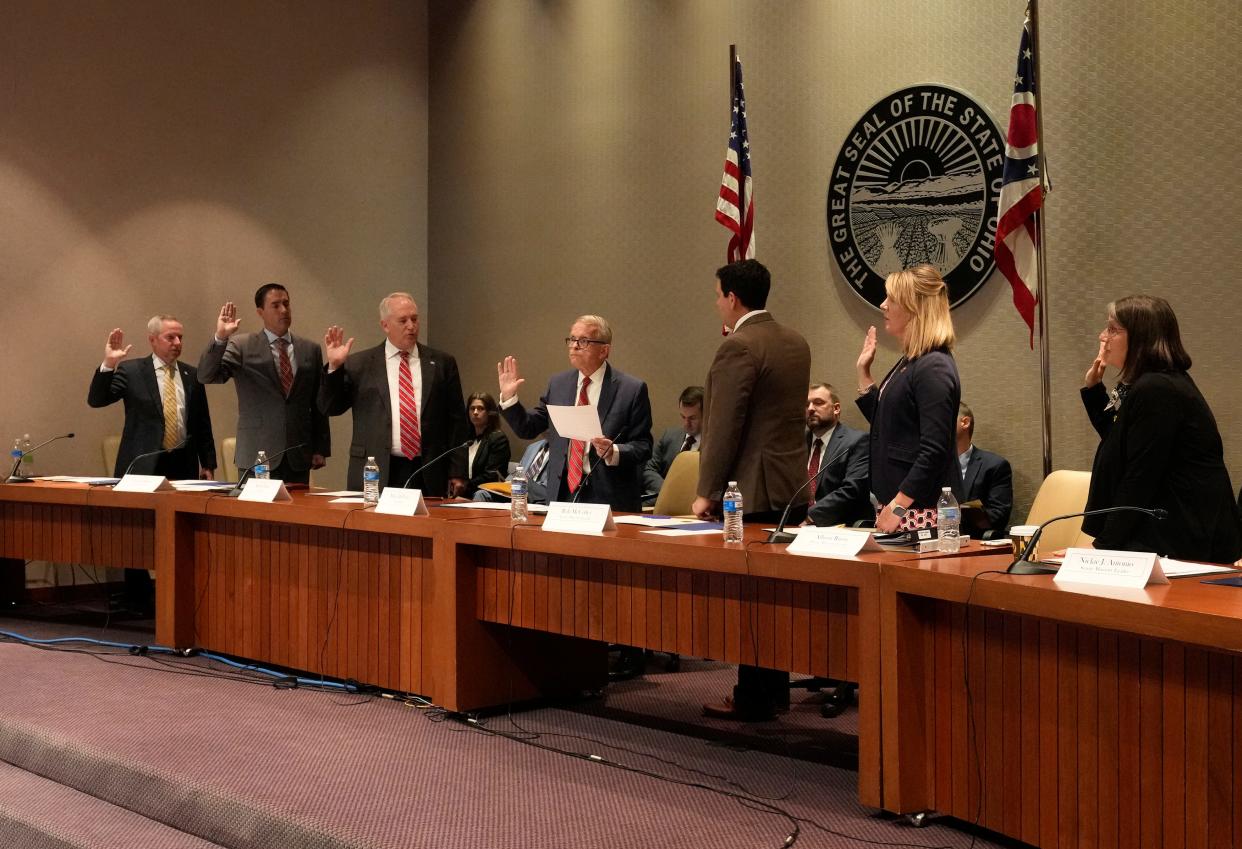Republicans, Democrats agree on new state House and Senate maps through 2030

Ohio Republicans and Democrats agreed late Tuesday on new House and Senate maps that will last through the 2030 elections.
The maps, approved in a unanimous vote, would give Republicans an advantage in nearly 62% of the House seats and 70% of the Senate seats. Through negotiations, Democrats were able to increase the number of competitive seats compared to the initial maps proposed last week.
Under the approved maps, Republicans would hold a 61-38 advantage in the House and a 23-10 advantage in the Senate. There would be three Republican and eight Democratic tossup seats in the House and three Republican and one Democratic tossup seats in the Senate.
The approved maps' Republican advantage is more than the partisan breakdown of the state between 2012 and 2020 when the GOP won about 54% of the vote and Democrats won 46%. Senate Minority Leader Nickie Antonio, D-Lakewood, said the maps don't meet the ideal proportionality but they are "more fair" than where they started.
“All the sides made compromises,” said Ohio Auditor Keith Faber, the commission’s GOP co-chair. “Ultimately the goal was to get a deal.”

House Minority Leader Allison Russo, D-Upper Arlington, said: "At the end of the day, we are not achieving what I believe the voters of Ohio wanted us to achieve."
Both sides knew the Ohio Supreme Court under new leadership was unlikely to overturn statehouse maps solely because they did not match Ohioans' political preferences exactly. Newly elected Chief Justice Sharon Kennedy, a Republican, made clear in past rulings that partisan balance was not mandatory.
“There’s every expectation, at least from me, that whatever is put in front of this Supreme Court will be rubber-stamped,” Russo said.
The vote comes as a ballot campaign, Citizens not Politicians, attempts to replace the seven-member Ohio Redistricting Commission with a 15-member panel of citizens instead. This group is aiming for the November 2024 ballot but must clear the Ohio Attorney General's initial review first.
Catherine Turcer, executive director of Common Cause Ohio and backer of the amendment, said the bipartisan maps aren't an endorsement of Ohio's redistricting process, which should be more open to the public. "You can do a bipartisan sweetheart deal."
Antonio said the best path forward is to take the pen from politicians and give it to citizens. "This process does not belong in our hands," she said.
Redistricting is the process of drawing new state House and Senate districts to adjust for population changes; it’s typically done every 10 years. Gerrymandering is when one party manipulates those lines to give their candidates an unfair advantage.
In 2015, Ohio voters overwhelmingly approved changes to curb gerrymandering, keep communities together and reduce uncompetitive districts decided in primaries instead of the general elections. But in 2021 and 2022, the Ohio Redistricting Commission approved multiple maps that the Ohio Supreme Court repeatedly declared unconstitutional for unfairly benefiting Republicans.
"When district lines are manipulated for partisan purposes, the power of the voter is stolen ? in my opinion, it is the most insidious form of stealing an election," Michael Ahern, of Blacklick, told the commission during a public hearing at the Ohio Statehouse Tuesday.
During Tuesday's public hearing, several Ohioans criticized the commission’s process: waiting more than a year and a half to meet on new maps, holding three hearings with little public notice at state parks, taking testimony on the Jewish holy day Yom Kippur and drawing its maps behind closed doors.
“I think a lot of folks share your frustration with the process,” Antonio told one Ohioan who testified.
Retired attorney Andrea Yagoda presented Republican members of the commission with “certificates of shame.” “I am here today to welcome you to the Hall of Shame.”
Jessie Balmert is a reporter for the USA TODAY Network Ohio Bureau, which serves the Columbus Dispatch, Cincinnati Enquirer, Akron Beacon Journal and 18 other affiliated news organizations across Ohio.
Get more political analysis by listening to the Ohio Politics Explained podcast
This article originally appeared on Cincinnati Enquirer: Republicans, Democrats agree on new statehouse maps through 2030
